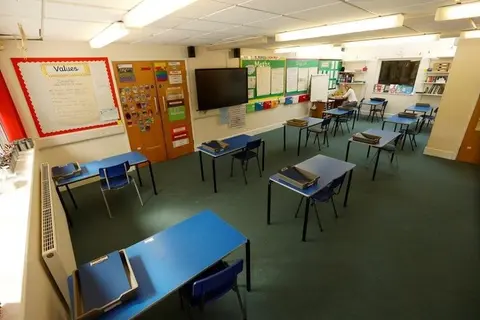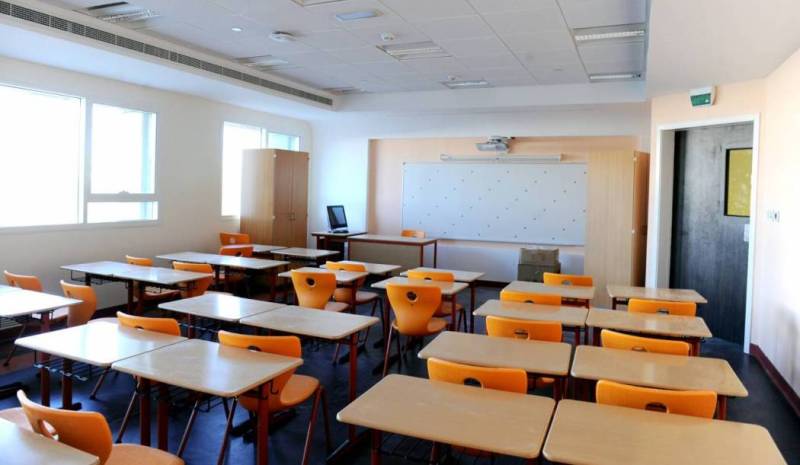The primary school project aims to establish a safe and motivating educational environment that caters to children aged 6 to 12 years. The focus is on providing educational services that help students build strong foundations in core subjects such as Arabic, mathematics, science, and foreign languages. The school relies on modern curricula and interactive teaching methods that encourage learning through play and discovery, fostering critical and creative thinking among students. Notably, the school features classrooms equipped with the latest educational tools, including smart boards and computers, along with a rich library and science labs that provide students with opportunities for hands-on and experimental learning. Additionally, there are sports and arts facilities to enhance students’ motor skills and creativity. The primary school project also focuses on selecting highly qualified educational and administrative staff with experience in addressing the psychological and educational needs of students to ensure effective academic support that enhances the learning experience. Therefore, the primary school project aims to provide a comprehensive educational environment that contributes to the development of students’ academic and social skills, and seeks to prepare a conscious, educated, and capable generation ready to face future challenges with effectiveness and confidence.

Mashroo3k Company plays a pivotal role in the development and implementation of the primary school project by leveraging its extensive expertise in preparing a comprehensive feasibility study that covers all aspects of the project (marketing, technical, financial, administrative, and organizational). The company starts by analyzing the target market to identify optimal investment opportunities and evaluating the educational needs of the region, which helps in creating a school that meets the needs of both students and parents. Additionally, the company provides in its feasibility study all aspects related to the project’s location, design, space allocation, and the timeline required for each phase of implementation.
Moreover, the company contributes to preparing a precise financial plan that ensures efficient cost management and achieves the best return on investment. The company’s role doesn’t stop there; it extends to offering administrative and organizational consulting services that help in establishing an effective administrative structure and developing successful marketing strategies. Therefore, Mashroo3k Company ensures the implementation of the primary school project with the highest levels of quality and excellence. This highlights Mashroo3k Company’s team of specialists and extensive experience, making it a strategic partner for the success and sustainability of the project.



A smaller number of students allows for greater attention to each student.
Advanced and comprehensive curricula.
An advanced educational environment that provides modern technological facilities and a variety of activities.
A focus on teaching foreign languages, both in speaking and writing.
Emphasis on developing both the personal and academic skills of students.
Enrichment activities such as teaching the basics of programming, robotics, and technical skills.
Executive summary
Study project services/products
Market Size Analysis
Risk Assessment
Technical study
Financial study
Organizational and administrative study

The Education Sector in GCC Countries
Because “Mashroo3k” Economic Consulting and Market Research Company believes in the importance of the education sector and its role in localizing national labor, it presents below the key indicators of the educational sector in GCC countries, thereby encouraging investment in this vital sector:
The total number of students in the Early Childhood Development stage (including nurseries and kindergartens) in GCC countries, according to the latest available statistics, reached 851.5 thousand students.
The number of school education students in the GCC was estimated at 9.3 million students (79.4% in the public sector and 20.6% in the private sector).
The number of adult education center learners was estimated at 181,247 students.
The number of higher education students was 2,206,446 students.
The number of early childhood education teachers was 50,647 teachers.
The number of school education teachers was estimated at 727,904 teachers.
There are 5,806 educational institutions operating at the early childhood stage.
There are 32,310 educational institutions operating at the school education stage.
Over the past years, governments in GCC countries have sought to bridge the gap between education and the labor market. They have adopted curricula that increase the share of vocational and technical education and encourage learning through modern media and technologies. It is also worth noting the increase in government spending by these six countries on education and its quality to graduate generations that meet the private sector’s labor needs.
According to the latest statistics:
Saudi Arabia spends 18.9% of its budget on education.
The UAE spends 14.8%.
Oman spends 12.2%.
Bahrain spends 9.8%.
Kuwait spends 12.3%.
Qatar spends 10.5% of its budget on education.
By the year 2023, the value of the private education market in GCC countries is expected to reach $26.2 billion.
The Global Education Sector:
The size of the global educational services market reached approximately $2,882.52 billion by the end of 2021, and global experts expect it to reach $3,191.79 billion by the end of 2022 — achieving a compound annual growth rate (CAGR) of 10.7%.
By 2026, the market value is projected to increase to $4,623.90 billion, achieving a CAGR of 9.7% over the forecast period.

By 2030, the global value of education as an industry is expected to reach $10 trillion USD.
By 2024, the global online education market is projected to reach $247.46 billion USD.
The AI-powered education market is expected to expand at a compound annual growth rate (CAGR) of 36% from 2022 to 2030.
In the year 2000, the number of pupils worldwide was approximately 657 million, and this number increased to 739 million by 2019.
In 2000, the number of secondary education students was around 452 million, rising to 601 million by 2019.